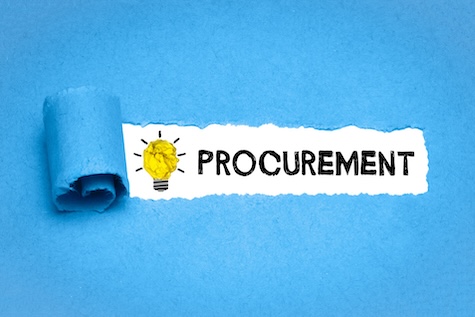
Procurement Reform In Vogue

An international convening of procurement leaders on driving acquisition as a strategic priority for governments in addressing national goals, hosted by OECD and preceded by a session on buying Generative AI. A well-attended and highly engaged set of discussions with US government and industry leaders on new ideas at the annual National Contract Management World Congress. New research on outcomes-based contracting from our Center, working with NCMA. Not to mention the Revolutionary FAR Overhaul led by OMB and the FAR Council, recent legislative proposals on procurement simplification from GSA, as well as multiple committees standing up by industry to provide ideas for the RFO.
As with the acquisition improvements of the 1990s and at other points of inflexion for reform, there may again be a confluence of activity that has the potential to bring significant change to the rules and cultures by which government and industry collaborate to buy products and services that serve mission and operational objectives. The multiple workstreams at play point to an opportunity for progress that can lead to significant small and large-scale good-government reforms across the public and private sectors.
Such reforms could point the way to adapt artificial intelligence in ways that can improvement procurement process, as highlighted in this article I wrote for the University of Pennsylvania Law School Regulatory Review; or address longstanding issues raised by separating government cost accounting standards from their commercial counterparts the Generally Accepted Accounting Principles (GAAP) . Other reform ideas might build on examples like “other transactions authorities” (as described in this IBM Center report) or commercial buying through “commercial solutions opening” authorities. More broadly, the Acquisition Transformation Framework developed under the Acquisition Of the Future initiative -- which Kymm McCabe and I shepherded with a group of highly respected acquisition and IT leaders a decade ago – could provide a guidepost for additional reform ideas recommendations. These and similar ideas can help to drive meaningful change even given the perennial challenges of government regulations, directives, or actions that often present barriers to such change.
A summary follows of several key pathways that can enable positive change, among additional similar paths.
OECD Forum
The Organization for Economic Cooperation and Development (OECD) recently convened a Global Forum on Public Procurement. Over 100 nations had representatives there from government or industry, and the discussions pointed to significant interest from many nations for leveraging procurement as a strategic imperative to serve the public rather than as a back-office procedural matter.
The Forum’s theme was around “The Untapped 13%”. On average around the world, 13% of economic activity comes from acquisitions across all levels of government. Yet few governments take actions that leverage this spend as a driver for key national priorities, and there have been few forums where leaders from the public and private sectors can share information about how best to leverage this as a significant financial resource to develop, innovate, and modernize.
The forum included insightful exchanges about the import of government acquisition as a strategic tool to achieve mission success that serves the public. Other discussions focused on the importance of artificial intelligence and innovation to modernize public sector delivery in partnership with industry.
I spoke on a panel with the procurement leaders from Sweden, the UK, and the EU on the topic of “Public Procurement as a Strategic Tool for Strengthening Resilience and Economic Security”. The panel, building on a toolkit for Sweden in this domain, discussed how agility and speed are key objectives for operationalizing partnerships to address crisis, enabling a “whole of supply chain” network for, detection, response, mitigation, and recovery. Additionally, we highlighted that collaboration across the public and private sectors was key to helping civilian and defense agencies address a wide range of natural and man-made threats.
The agenda and sessions remain available for viewing. OECD also has rich content on larger set of procurement issues here.
The Forum was preceded by an insightful workshop that I joined on generative AI and procurement led by OECD and the Open Contract Partnership, which followed on a similar session hosted by the George Washington University Law School in DC. This session gathered leaders from government industry to address how procurement offices can best leverage the buying of generative AI technologies. Some key takeaways (see blog summary of meeting):
- Gen AI acquisition should be framed as part of a larger set of organizational objectives for AI, driving mission and operational effectiveness and protecting against cyber and other risks.
- While GenAI raises new issues, effective buying processes for technology are still relevant, such as identifying outcomes and not inputs as key performance metrics, adapting agile procurement techniques, and engaging a broad supplier based to bring in innovation.
- Workforce skills in how to use AI should be the in purview of procurement and business teams, not just the IT office.
NCMA World Congress
NCMA hosted a series of active sessions on many topics, as is always the case. The event, with agenda here, was well-attended and featured current government leaders from GSA and multiple agencies as well as industry. NCMA leader Kraig Conrad also discussed a recent initiative led by the NCMA Acquisition Efficiency Working Group, a public website with practical ideas for procurement reforms that can be presented to the government in driving longer term change that can be catalyzed by the Revolutionary FAR Overhaul. Multiple other associations are engaged in similar efforts.
At NCMA, our Center launched a new research project in collaboration with the Commerce and Contract Management Institute (CCM) on outcomes-based contracts (OBCs). Government and industry leaders discussed multiple issues in two focus groups, including:
- the need to define OBCs consistently across government;
- the importance of understanding differences and similarities with performance-based contracts, which have been implemented over three decades;
- the value of models for OBCs that can be adapted, including models from other governments and the private sector; and
- how to frame ways that contracting offices can set outcome-based requirements and metrics in collaboration with industry.
Our Center looks forward to continued collaboration with the CCM Institute in developing practical and actionable recommendations for implementing OBCs.
Revolutionary FAR Overhaul (RFO)
OMB’s Office of Federal Procurement Policy is working with the FAR Council, including leaders from GSA, DOD, and NASA, to streamline acquisition regulations, which have long been cited as constraints to efficient and mission-based decision-making in procurement awards and post-award contract management. The RFO is being managed by a team with significant expertise in contacting reform, and provides an opportunity for industry and the public to comment on proposed deviations to current FAR language – and offer ideas for strategic priorities in contracting reform, similar to global efforts described above.
Alongside the RFO, GSA has already submitted multiple proposals for statutory change designed to streamline and simplify procurement. These proposals cover a number of topics that can help to reduce bureaucracy and increase efficiency, including reforms to improve competition, small dollar purchasing, mission-based buying, access to commercial solutions, reduced fees, workforce training, innovation, the protest process, cost accounting, and burden reduction.
By engaging with the RFO, industry – notably through groups that have stood up via multiple stakeholder associations -- can present ideas for mission- and outcomes-based improvement in contracting that can streamline processes in the near term, and reduce barriers and complexity to achieve more transformational changes in the longer term. This effort provides a channel for engaging on meaningful reforms to the contracting processes that have built up over many decades – opening a door to significant and positive reforms that can improve government return on contract investment in the decades to come.



